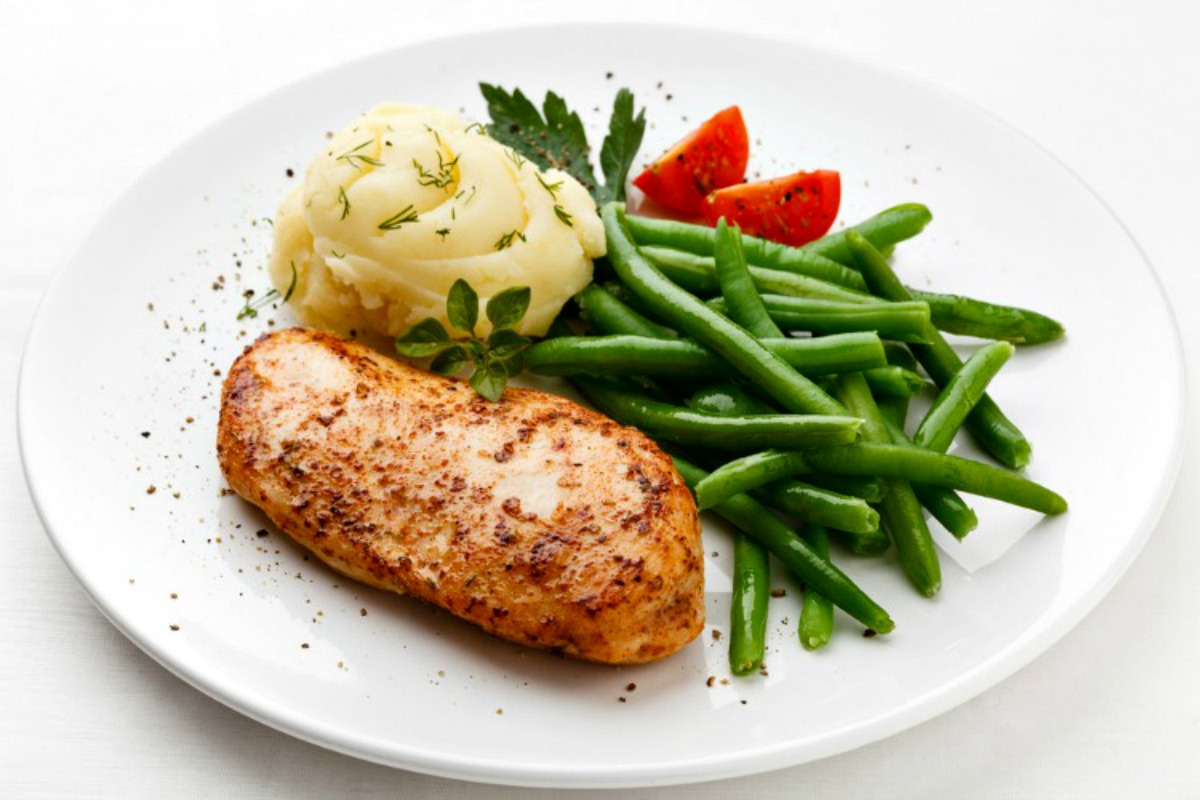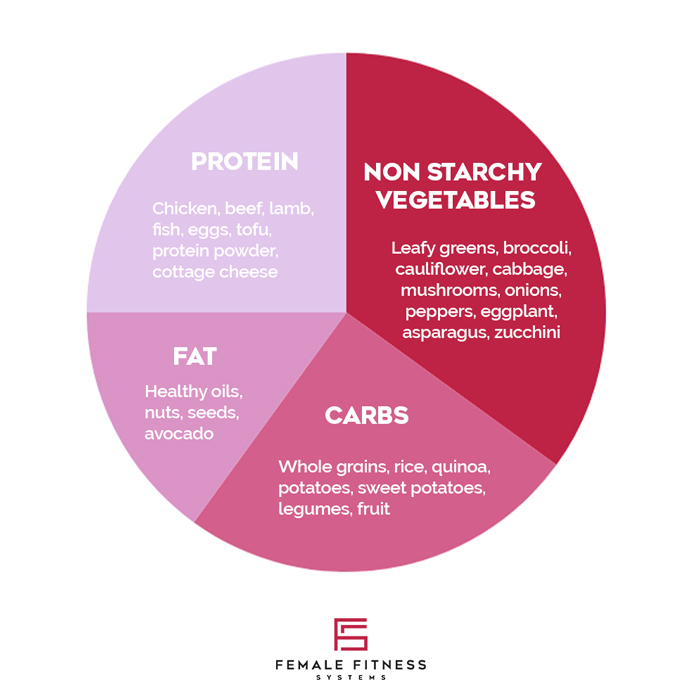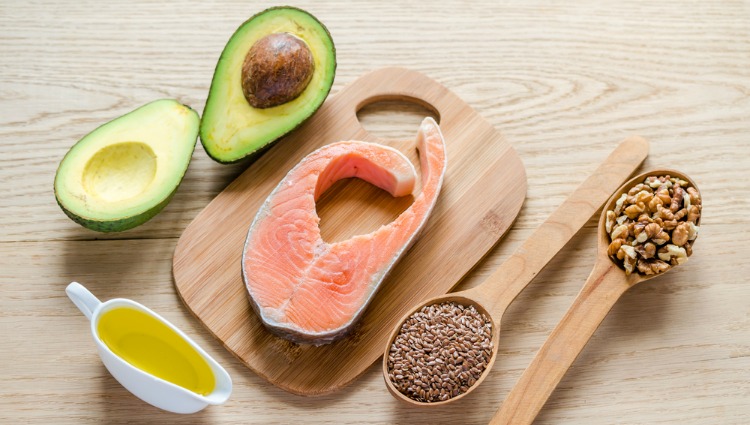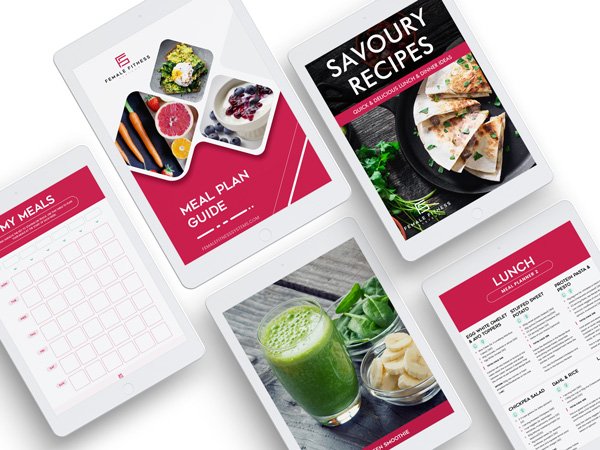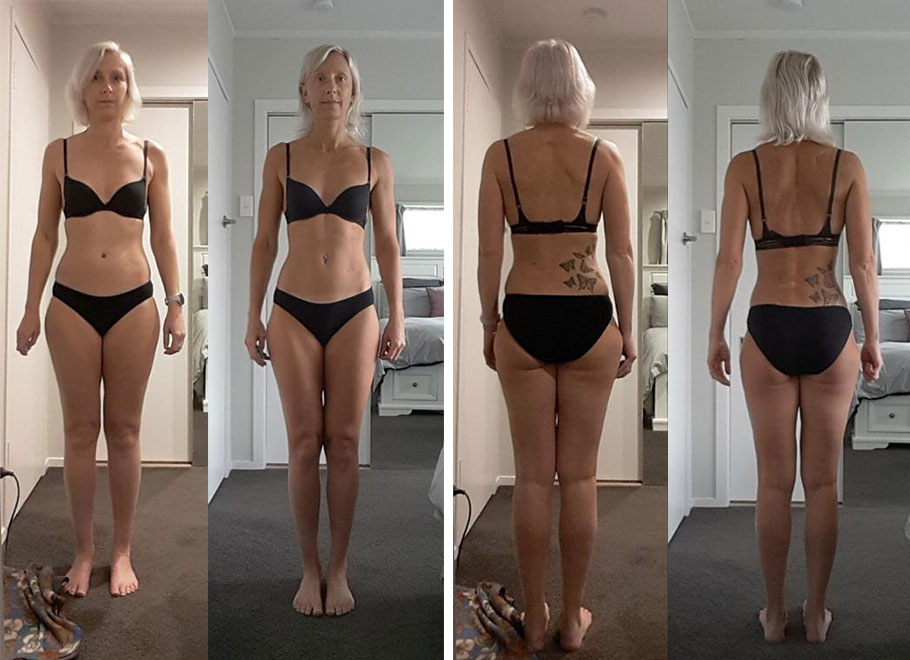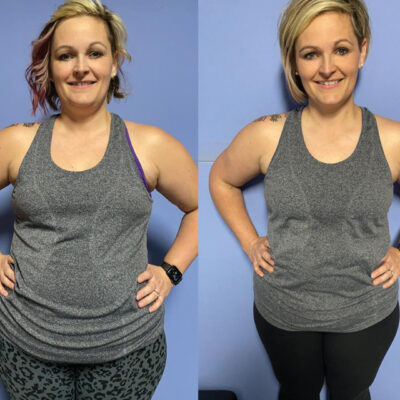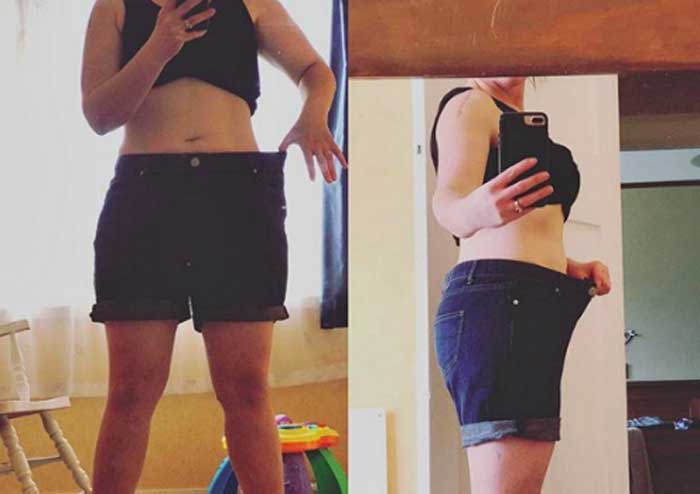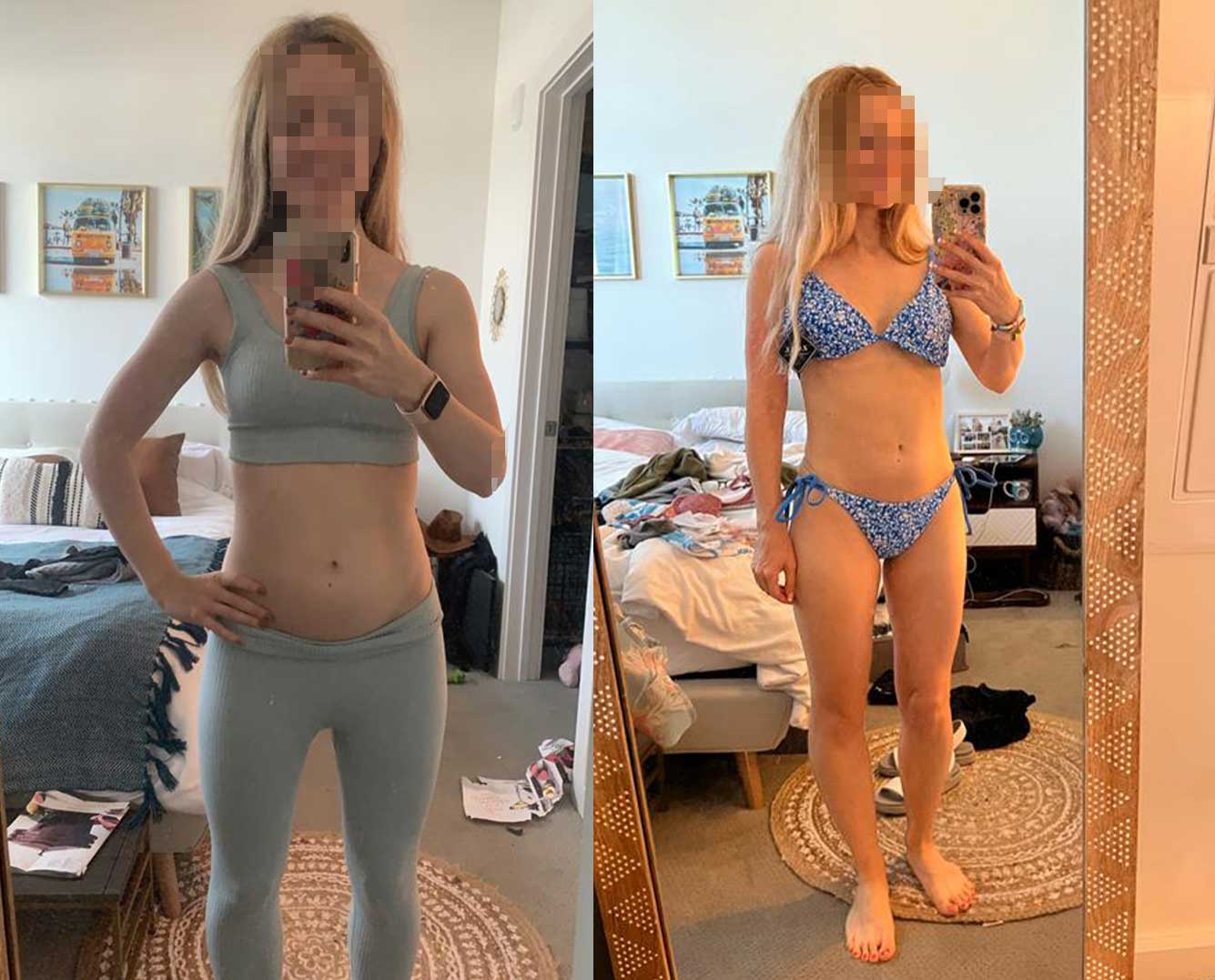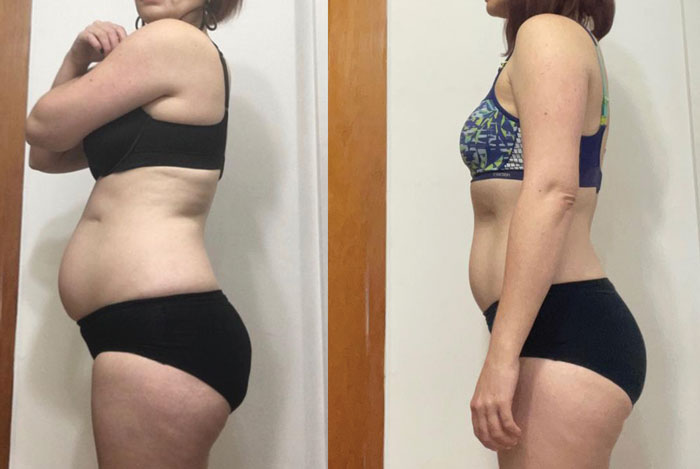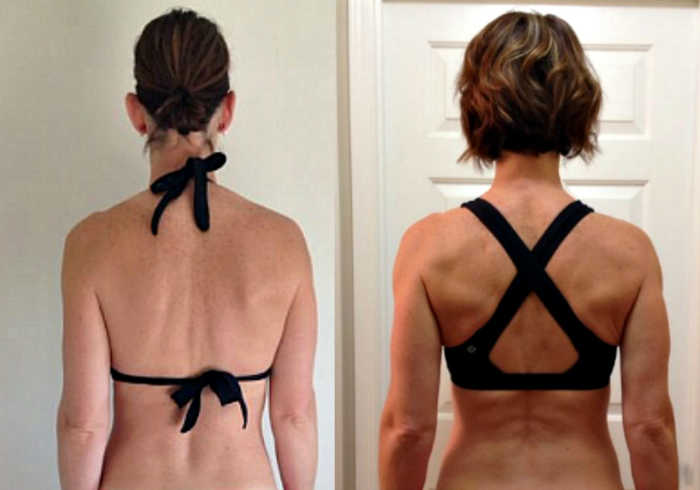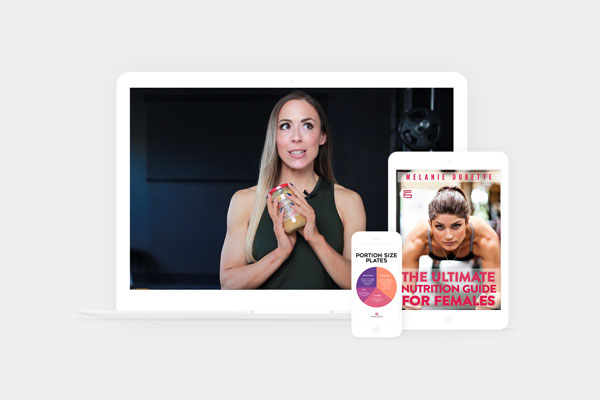PORTION SIZES V CALORIE COUNTING
Do you need to count calories – or can you rely on portion sizes?
It depends. Quite honestly, I prefer that my ladies count calories for accountability. But if you are someone who is fairly happy with your physique and don’t want to count calories, focusing on portion sizes may be sufficient. Having a good knowledge of portion sizes is also very useful when you eat out or have periods of time when you can’t count calories.
In this article I’m going to walk you through everything you need to know about portion sizes. We’ll talk about portion sizes for protein, carbs, and fat – which will be useful even if you count calories. So, if you’ve ever wondered how much protein (or carbs and fat) you need – this is the article for you.
I’ve also created a helpful Portion Size Plate, which you can download below – completely free!
BUT FIRST, LET’S TALK ABOUT CALORIE COUNTING
Everyone benefits from counting calories at least for a certain amount of time.
Do you know why programs like Jenny Craig and Weight Watchers are so successful? It’s because they tightly control your calories.
Think about it this way – for you to lose weight, the calories you take in need to be less than the calories you burn each day. It’s that simple.
Here’s why you should count calories (at some point):
- To figure out how many calories you are eating.
- To get the optimal balance of macros (protein, carbs and fats) and things like sugar and fiber.
- To find your minimal dose for weight loss (ie. ensuring you are eating enough).
- To get the consistency you need to lose weight and keep it coming off.
- If you want to reverse diet after you’ve lost weight.
In my experience, most women only really start to understand what they should be eating when they track calories. Many women struggle until they start counting calories because they need the consistency and accountability to lose weight.
With that in mind, whether you count calories or not, it’s important to understand portion sizes so here’s what you want to know!
PORTION SIZE GUIDE: PROTEIN
One of the biggest mistakes women make with their nutrition is not eating enough protein.
If you have trouble losing weight, if you skip meals, or if your appetite is all over the place, I can almost guarantee you aren’t eating enough protein.
Protein does a lot of things in your body but to really simplify things – think of protein as the macronutrient that will keep you lean, young and satiated. Protein is important for muscles, bones, hormones, skin and metabolism. Research shows that higher protein intakes help preserve muscle when you are trying to lose weight – and that’s really important so you don’t just end up “skinny fat.” Protein will also keep your appetite in check – whether or not you are trying to lose weight.
As we get older, protein becomes even more important because our ability to use amino acids from protein diminishes and is one of the major contributing factors to sarcopenia (loss of muscle and strength as we age). Sarcopenia has devastating consequences to our independence and vitality as older adults. In fact, protein requirements for older adults are even higher. Ironically, as we age. it’s common to consume less protein, especially among seniors.
How much protein do you need?
Generally 25-30 percent of your daily caloric intake should come from protein.
For someone eating 1600 calories per day that means about 400 calories should come from protein (which is about 100g of protein). This usually equates to about 25 to 30g of protein per meal, depending on how often you eat during the day. If you only eat three meals per day, then you’ll need to be on the higher side of about 30g or more per meal.
It’s really important that you understand the above breakdown. To get 100g of protein per day – you need a decent portion of protein with each of your three main meals and/or at least one high protein snack. This means you can’t just have toast or muesli for breakfast or a salad with not much protein for lunch. Or both – which is what a lot of women do when they try to “eat healthy.”
Eating a good portion of protein with each meal will make a HUGE difference to your appetite and mood throughout the day.
To get 25-30g of protein you need to eat one of the following:
- 100g (raw) chicken breast (about 22g)/100g (weight after cooked) chicken breast (about 30g)
- 7-8 egg whites (or 2 eggs + 4 whites)
- 1 serving protein powder (depends on the brand)
- 200g cottage cheese
- 250g firm tofu
The exact amount of protein in a serving will depend on the brand and serving size but this gives you an idea of basic protein sources. Also, rarely is someone going to eat 200g or more of cottage cheese or tofu in one meal. So if you are relying on these sources of protein or other vegetarian sources of protein like beans, you need to get more protein at other times of the day.
Protein powder is very easy way to get your protein intake up if you are someone who likes to eat more vegetarian style meals or even if you don’t want to be eating lots of animal protein.
Also, it’s important to note that foods such as yoghurt, nuts and nut butters, and hummus don’t have as much protein as you think. Many women rely on these are healthy snacks but there are higher protein options that will keep you better satiated.
Think about it this way – you could blend up a smoothie with some protein powder and some fruit or superfood powders like cacao, or you could have a handful of nuts for about the same calories. It’s likely the smoothie will make you feel fuller for longer because it’s higher protein. Plus you get more food “volume” which just feels better mentally.
To put it all together for you, here’s what I always recommend to my clients:
A simple habit that will help you get and stay lean is to build your meal around protein first, and then add everything else.
Figure out what protein source you will have with your meal and then you can add carbs and fat. Here’s what your plate should look like at every meal. If you are building a snack or smoothie the same idea applies.
PORTION SIZE PLATE
Download a high quality, printable version of the Portion Size Plate here.
PORTION SIZE GUIDE: CARBOHYDRATES
Carbs are not as evil as social media makes them out to be – but women often overeat carbs at the expense of protein even when they have the best intentions. So you don’t have to completely cut out carbs or follow a low carb diet – you just need to create a better balance with protein, carbs and fats.
I’ve helped so many women find this balance and I promise it works. There’s absolutely no need to go to the extreme and make carbs the villain.
Let me emphasize this point because I know you will be bombarded with low carb/high fat diets on social media and it’s really important you understand that they may not work for you. In the long run low carb diets can be problematic, especially for women. They can cause poor moods, increased anxiety, cravings, PMS, low energy and motivation – all of which make compliance with a diet and training even harder. Low carb diets can also have consequences like slowed metabolism, thyroid problems, difficulty building muscle and muscle catabolism (loss of muscle which further slows metabolism).
How many carbs do you need?
There are many factors that influence how many carbs you should eat, including:
- genetics
- age
- training goals (ie. to lose weight or build muscle)
- how much fat and muscle you have on your body
- where you store fat on your body
- whether you have a history of dieting
- whether you suffer with PMS and/or anxiety
- thyroid health
- the type of training you do
- your activity level.
In my experience, most women can lose weight eating at least 130-160g of carbs per day. There’s usually no need to go any lower with carbs.
Some women can eat considerably more carbs, particularly if their primary goal isn’t weight loss but rather performance and/or building muscle. You’ve got to figure out what works for you but you shouldn’t blame carbs on your inability to lose weight if you haven’t otherwise cleaned up your diet or if you don’t create consistency and accountability for yourself by counting or controlling calories.
Here’s a list of foods that will give you about:
30g of carbs:
- 150g potatoes or sweet potatoes
- 120g banana
- ½ cup rice/quinoa/oats (measured after cooked)
- 1 wrap
20g of carbs:
- 2 thick rice cakes
- 2 slices low carb bread
- 1 cup blueberries
- 125g grapes
- 150g gourmet yoghurt
- 1/2 cup cooked chickpeas
For packaged foods, the amount of carbs will depend on the brand but you get the idea! You can also see that I’ve included chickpeas on the list of carbs. Legumes are a vegetarian source of protein but they usually have two times more carbs than protein per serving so they are more carb than protein.
I know this can be overwhelming so if you want some help getting the right balance for yourself, check out my Meal Plan that takes care of everything for you.
Learn more about my Meal Plan here.
PORTION SIZE GUIDE: FAT
Once you’ve figured out how much protein and carbs to eat, the remainder of your calories will come from fat. Usually fat will account for 25-30 percent of your daily calories. Despite the popularity of high fat Paleo diets, research suggests some women benefit from lower fat diets where the fat content is 25% or less (ie. women struggling with inflammatory conditions or at risk for reproductive cancers).
Fat is calorically dense which means that it’s easy to overdo. Fat has 9 calories per gram as compared to protein and carbs which have 4 calories per gram. That means a serving size of peanut butter is usually a lot smaller than you think. Also, you can’t just go dumping tons of coconut oil in your bliss balls or butter in your coffee because you’ll quickly blow through your calorie budget.
Here are some healthy sources of fat:
- Eggs
- Olive oil
- Coconut oil
- Nuts and seeds
- Butter and nut butters
- Avocado
- Salmon
- Organic full fat dairy
When it comes to serving sizes, you can see how just small servings have quite a lot of calories:
1 tsp oil = 40 calories
15g peanut butter = 90 calories
50g avocado = 80 calories
10 almonds = 70 calories
25g haloumi cheese = 80 calories
1 cup 3%/dark blue top milk = 150 calories
Because fat is so calorically dense, it’s easy to underestimate the amount you are eating and how many calories you are consuming. It’s a good idea to use a food scale if you have a taste for fatty foods. I absolutely have to weigh my peanut butter because I’m a complete addict! If you aren’t weighing your food, you may be consuming a lot more calories than you think.
Remember to check out my Meal Plan and Premium Nutrition Coaching if you want some help finding your balance.
You may also find these articles helpful:

